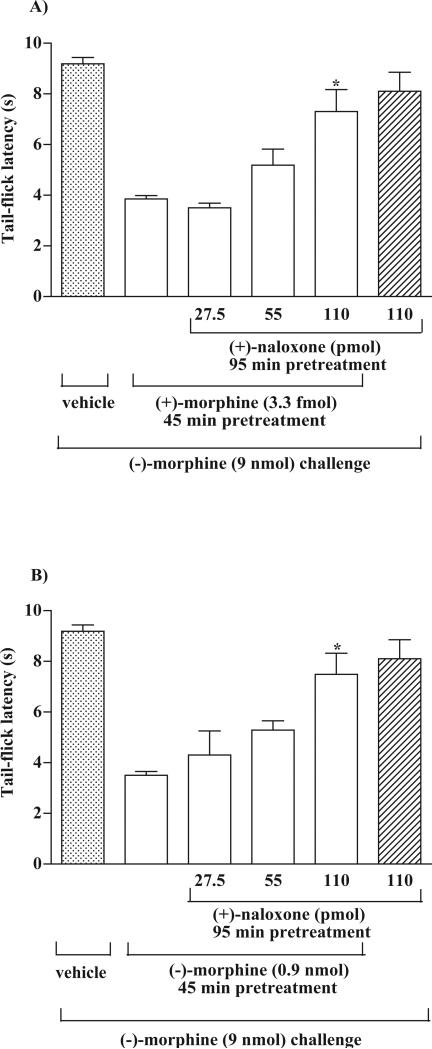Fig. 4.
Pretreatment with (+)-naloxone reverses the attenuation of the (−)-morphine-produced tail-flick inhibition induced by (+)-morphine (A) or (−)-morphine (B) in the rat ventral periaqueductal gray. Groups of rats were pretreated with different doses (27.5, 55 and 110 pmol) of (+)-naloxone or vehicle for 95 min and (+)-morphine (3.3 fmol) or (−)-morphine (0.9 nmol) for 45 min given into ventral periaqueductal gray and were challenged with (−)-morphine (9 nmol) given into the ventral periaqueductal gray thereafter. The tail-flick response was measured 20 min after (−)-morphine challenge. Each column represents the mean and the vertical bar represents the S.E.M. with 6 -7 rats in each group. One-way ANOVA followed by Dunnett's post-test was used to test the difference between groups; the F (3,28) = 10.36 (A) and F (3,26) = 7.20 (B); * p < 0.01 compared with the (+)-morphine or (−)-morphine pretreated rats challenged with (−)-morphine (the second column from the left). The first column from the left and right represented control groups, which did not include in the statistical test.

